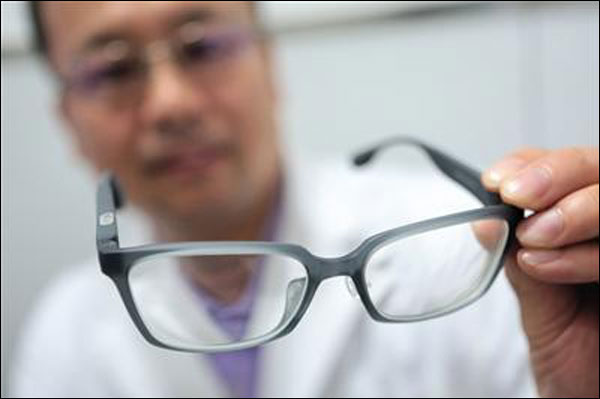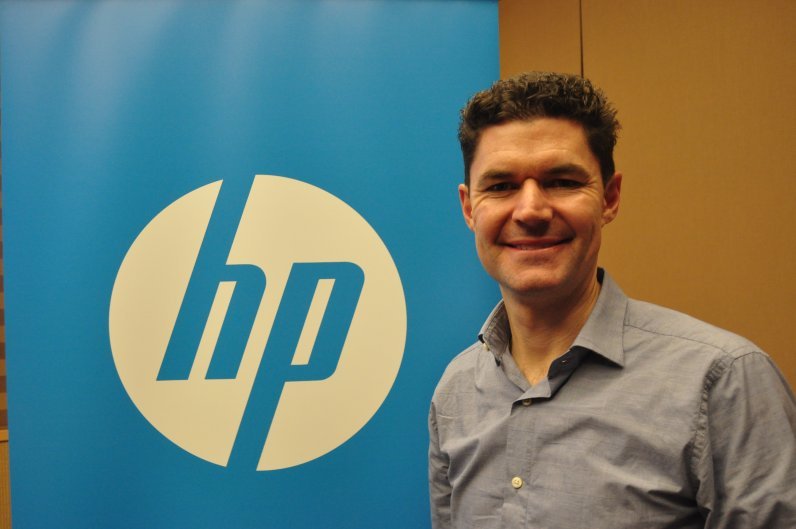Beijing Ophthalmologist Makes 3D Printed Spectacles to Treat Deformed Corneas
Originally published at 3D Printing Industry.
Beijing Tongren Hospital has 3D printed spectacles to help patients with deformed corneas.
 Dr. Song Hongxin, an ophthalmologist and researcher at the Beijing Tongren Hospital, China, has 3D printed spectacles to help patients with deformed corneas.
Dr. Song Hongxin, an ophthalmologist and researcher at the Beijing Tongren Hospital, China, has 3D printed spectacles to help patients with deformed corneas.
As 3D Printing Industry reports, the 3D printed optical lenses are designed specifically to treat keratoconus, a progressive eye disease which deforms the cornea. The idea is that a 3D printed customized lens could fit the deformed cornea accurately and stabilize the sight of the patient.
3D printed spectacles for corrective vision
A keratoconus-affected cornea loses its natural roundness and bulges out to form a cone-like shape. The light entering the eye to the retina is deflected which is the cause of distorted vision. According to the Royal National Institute of Blind People (RNIB), keratoconus affects 1 in 2,000 people in Britain and is more common in South Asian people.
Dr. Hongxin explained that a blueprint of a patient’s cornea can be used to fully customize the 3D printed spectacles to fit corneas of different shapes. This will correct the distortion of the eye-sight. “Normal corneas have a smooth and convex surface, while their [keratoconus patients] corneas are bumpy with many irregular concaves,” Dr Hongxin told Beijing News.
Inspired by NASA
Dr. Hongxin says the 3D printed spectacles for cornea patients were inspired by NASA’s adaptive optics technology (AO). NASA uses adaptive optics to improve its telescope’s image quality which is distorted by the Earth’s atmosphere. Computer-controlled deformable mirrors can correct the distorted image in real-time, producing finer images of extremely faint objects.
Dr. Hongxin has authored many research papers discussing the use of AO imaging to understand retinal diseases. Two of his papers, on the use of AO, Cone and Rod Loss in Stargardt Disease Revealed by Adaptive Optics Scanning Light Ophthalmoscopy and Fluorescence Adaptive Optics Scanning Laser Ophthalmoscope for Detection of Reduced Cones and Hypoautofluorescent Spots in Fundus Albipunctatus, were supported by grants from Canon Inc. for the purpose of commercializing the technology.
3D printed corneas
In recent years, science institutes have taken steps to cure cornea related diseases with the help of 3D printing. The Instituto de Investigación Biomédica del Hospital La Paz (IdiPAZ), Madrid, revealed that it has entered a five-year long collaboration with MIT to 3D print cornea replacement.
This year in May, scientists at the Newcastle University (NCL) successfully 3D printed artificial corneas in under ten minutes.
The optical industry is also using 3D printing in innovative ways. In March 2017, Luxexcel, a company specializing in 3D printed ophthalmic lenses, received approval from International Organization for Standardization (ISO) to 3D printed optical lenses. A couple of months later, the company announced that it has received a $10 million investment 3D print lenses.



Leave a Comment
Want to join the discussion?Feel free to contribute!